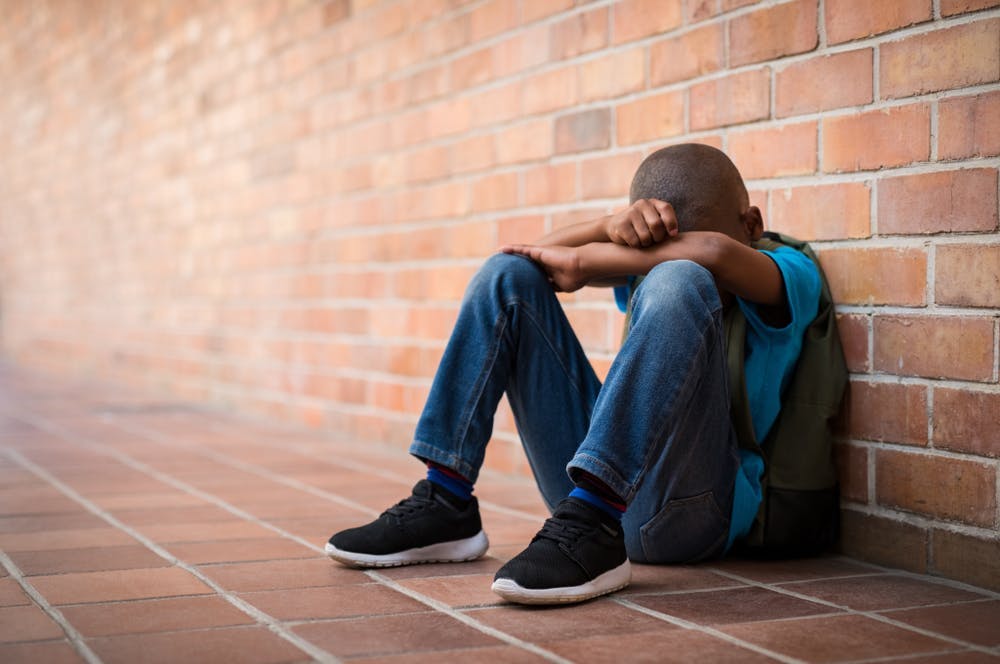Internet safety for kids: a parents' guide to online safety
By David Greenwood
Internet Safety for Kids: A Parents' Guide to Online Safety
The internet is an important part of day-to-day life for children, and only becomes more so as they get older. In today's digital age, young people grow up surrounded by technology and the vast world of the internet. Whilst the internet offers numerous educational and recreational opportunities that are child safe, it also comes with potential risks. As a parent, it's crucial to recognise these risks and equip yourself with the knowledge and tools you need to keep your children safe online.
The risks that children and young people face online range from cyberbullying and inappropriate content to online predators. Children will most frequently encounter these risks using social media and online games, but they are present throughout the digital world.
Developing your technological savvy will help you get to grips with online tools that let you control your child’s access to potentially harmful materials. More importantly, it will help you to teach your children safe and responsible internet usage, and help you recognise when something is wrong.
Thankfully, there are many steps you can take to protect children on the internet, and comprehensive safety tools that parents can explore. This gives you an opportunity to decide for yourself how much freedom your kids should have.
To help parents get to grips with these issues, the expert child abuse solicitors at Switalskis have produced this guide, which collects our online safety advice for parents and children. We want to help parents to understand the online risks that children face, and implement best practices in internet safety to protect kids from harm. The right solution for you will depend on your specific circumstances, and we have offered only a handful of tips on avoiding potential dangers. If you have ongoing concerns, read the NSPCC's guide for the latest online safety advice.
Communication
One of the most important steps you can take is to educate your kids about using the internet before you give them access. Even if you intend to restrict your kids' access to the internet using parental controls, it’s important to recognise that you cannot prevent them from using it completely. There are many types of online tools that you can use to restrict your child's access to harmful content, but these are not usually enough to tackle every possible risk. Instead, you should teach them about the ways they can stay safe when they spend time online and make sure they understand how to use the internet responsibly.
To keep your kids safe, you must educate them on the risks involved in browsing the internet and encourage them to talk to you about their online activity. Basic guidelines to share with your children should include: to never share personal information online (names, addresses, phone numbers, or school details); to never post personal pictures; and to always tell a parent or trusted adult about any worrying or confusing conversations. If they're old enough, teach them about privacy settings on social media and gaming platforms. For younger children, you can change these settings on their behalf, but you should still ensure they understand what the settings mean and why they’re important.
Where possible, direct children to use platforms designed specifically for their age group, which are more likely to offer a safer online environment. Warn children about the dangers of online scams and teach them not to click on suspicious links, download unknown files, or share any financial information.
At the same time, it is vital to ensure that communication moves in two directions - you should not only teach your children, but learn from them and encourage them to share with you. Spend time online together and take your child seriously if they tell you about inappropriate content that they have accessed. Good communication with your children will not only help them to understand risks and maintain the security of their personal details but will also ensure they won’t be afraid to talk to you about their concerns.

Parental controls
While we have noted above that parental controls are not always enough to help children avoid potential risks, they are nevertheless helpful tools. As a minimum, you should secure any devices that your child is allowed to use with password protection, especially if it contains personal information. If the device belongs to you and has payment information stored in it, make sure that a password is required each time a payment is made. Otherwise, children may be able to make purchases using the device, which can have negative consequences for both the child and their parents.
Many popular video streaming apps have parental controls that restrict children's access to age-inappropriate content. For example, YouTube Kids is an app that is designed specifically for children, and provides an experience where they can explore safely on their own, while also providing several useful safety features for parents. Netflix also enables parents to create profiles exclusively for children, and most apps for UK TV channels allow users to set passwords or PINs that restrict access to adult content. Remember that these apps are available on almost any device, and it's a good idea to check all of the devices your kids interact with to make sure these controls are in place.
Games and other types of apps also have these controls, and further settings may also be available - for example, options that enable you to limit a user's screen time or monitor their activity can be useful. Install an internet browser that offers you suitable controls and teach your children how to use it. Using these tools will allow your child a certain amount of freedom as they explore the internet, but also ensure they remain safe online.
Other basic tips you can use for parental supervision include: keeping the devices in common areas where you can watch and monitor usage; and bookmarking child-friendly sites for easy access.
Cyberbullying
Cyberbullying is a significant concern in the online safety of children and teenagers. It can also be difficult for parents to spot, as there may be limited evidence that your children are being bullied online outside of a sense that something isn't right.
Cyberbullying can take various forms, including:
- Sending threatening or mean messages, or posting them on public sites
- Posting harmful or untrue statements online
- Sharing embarrassing or inappropriate images or videos, including sexting
- Creating fake profiles or websites to mock or harass others
- Excluding individuals from online groups or activities
For parents, it is important to understand these activities and the effects they can have on children. When educating your kids about their online interactions, make them aware of cyberbullying - not only to protect them from bullies, but to ensure that they do not participate in bullying themselves. Sometimes, it can be difficult for children to recognise the effects of their actions, especially when they face peer pressure from other children.
Teach your children about the effects of their actions online, with a focus on empathy and respect for others. Discuss the permanence of online actions and the real-world consequences of digital behaviour from an early age, to help children understand the importance of online safety and learn while they explore.
Encourage your kids to keep personal information private, to think before they post, and to only accept friend requests or communicate with people they know in real life. At the same time, teach them how to use privacy settings on social media apps and gaming platforms to protect their information and control who can see their posts and interact with them.
Remind your children that anything they post online will stay online, and the ways in which they present themselves on internet platforms may affect them later on in life.
Finally, make sure they do not respond to any bullying messages. Instead, document any instances of bullying and report them to the online platforms where the bullying is taking place. If your child knows their bullies in real life, speak to teachers, school counsellors, or other authorities about your concerns. If the cyberbullying involves threats of violence, extortion, or sexual exploitation, it may be necessary to contact the police.
Grooming
Grooming is one of the most serious threats that children face on the internet. Online grooming is a process in which an adult befriends a child with the intention of exploiting them sexually, either through producing child pornography, engaging in sexual conversations, or arranging to meet in person. It can lead to many different types of abuse if it is not detected and dealt with.
Some of the advice we've already given applies here. Talking to your kids about the importance of privacy and why they should never share personal information online without parental permission can help them to avoid encounters with predators. You may also decide to educate your children about the tactics predators might use online, such as pretending to be someone else, offering gifts, or asking for inappropriate photos. It's important to do this without causing distress, but your children should be aware of the actions they can take to keep themselves safe from online risks.
When talking to your kids about their internet use, ask about the people they interact with online and show interest in their online activities in a supportive way. Encourage your children to question the intentions behind requests for personal information or photos, and to critically assess whether online friends are who they claim to be. These skills can also help them to avoid fake news and phishing scams, which can pose additional risks.
While you should establish rules for which platforms are appropriate to use, what types of communication are acceptable and what content can be shared, you must also try not to be too strict, as this can have the opposite effect. Instead, help your children understand why the rules are in place, as this instils a sense of responsibility and encourages them to think about their own safety in their online world.
You can use parental control software to monitor your child’s online activity and restrict access to inappropriate content, but this will not always be consistently effective. Older children can often find ways around restrictions and won’t appreciate the feeling that they are being monitored. Instead, building trust through communication can help to make sure they stay safe.
Instead of trying too hard to enforce rules about your children's use of the internet, you should instead learn about signs of grooming and the actions you can take in response. Be alert to changes in your child’s behaviour that may indicate they are being groomed, such as secrecy about online activities, unexplained gifts or new electronic devices, withdrawal from family and friends, or displaying sexual knowledge inappropriate for their age.
Should you detect any of these signs, talk to your children. Encourage them to report any uncomfortable or suspicious interactions to you and assure them they won’t be in trouble for doing so. Familiarise yourself with the authorities you can contact if you suspect your child is being groomed, including the National Crime Agency's Child Exploitation and Online Protection command , and your local police.
By combining education, open dialogue, and an understanding of how children use technology, parents can significantly reduce the risk of their children being targeted by online predators. Create a safe environment where your children can enjoy the benefits of the internet without falling prey to its dangers, and you’ll ensure their online safety.

Emotional manipulation and threats
Emotional manipulation is one of the key tactics cyber-groomers use to exploit children. This may have a similar effect to cyberbullying but is often more sophisticated, which means that parents need to be especially vigilant about this danger. Examples include:
- Stonewalling: This refers to someone refusing to communicate or engage with a child in an attempt to manipulate them. This may involve shutting down conversations or refusing to engage with the child. It’s a form of cyberbullying, which can include conscious efforts to exclude someone else from a group or activity. It may also be a tactic used by an abuser to manipulate a child. For example, if your child becomes emotionally invested in their abuser, and then questions the abuser’s behaviour or fails to comply with their demands, the abuser may ignore them or cut off contact. This can cause the child to feel abandoned and anxious, which may lead them to comply with unreasonable demands to regain the connection. It may be used as a threat to prevent children from reporting instances of abuse they have suffered.
- Love-bombing: This is when someone showers a child with excessive affection, attention, and praise online, often to gain their trust or manipulate them into a dependent relationship. It can make children feel special and valued, but the underlying motive is to exploit or control them. Once the manipulator feels they have secured the child's loyalty or affection, they may begin to exploit them or demand things in return. People who use these tactics may be adults, or peers of the child in question.
- Financial exploitation: Related to love-bombing, this type of abuse can occur when a child is given expensive gifts or money by someone with the intention to manipulate them. Once the child has received the gift, the manipulator may demand something in return. This type of abuse is often easy for parents to detect because expensive gifts often draw attention, but this does not mean that it is any less of a risk.
- Gaslighting: This is a form of psychological manipulation where the perpetrator seeks to make the victim doubt their own perceptions, memories, or sanity. For example, if a child confronts the perpetrator about inappropriate behaviour, the perpetrator might deny it ever happened or accuse the child of misunderstanding the situation, leading the child to question their own judgement and reality. This tactic is often used to discourage children from reporting abuse to an adult, or to make children feel that they are further dependent on their abuser.
As a caregiver, it is important to ensure children feel safe and comfortable enough to come to you if they experience emotional abuse. You should be careful about punishing children if they tell you about inappropriate internet usage, as a fear of getting into trouble will often prevent children from telling you about future breaches of their online safety.
Child sexual exploitation
Child sexual exploitation (CSE) is often one of the biggest fears for parents when their children use the internet. This problem is well-understood and there are steps parents can take to protect their children, but even so, it is important to acknowledge that the problem is widespread and that there are serious risks involved. A common misunderstanding is that CSE most commonly involves adults grooming children when, in fact, many examples of online sexual abuse are conducted by other children and peers. While the dangers of grooming cannot be ignored, parents should try to take a nuanced view and understand the different types of CSE in order to prevent it comprehensively.
Alongside grooming by an adult, any of the following activities may be considered CSE:
- Sextortion: This occurs when someone threatens to share private and sensitive material (usually images or videos). Often, this is done with the aim of forcing the child to send sexual content, money, or valuables. This can start from what seems like consensual sharing of images or information among peers. It is a crime that comes with severe punishments if perpetrators are convicted.
- Revenge porn: This involves sharing intimate, sexual images or videos of someone without their consent. Often, this content is distributed online to cause embarrassment or harm to the person or people in the image. Again, this may begin after images are shared consensually, and may be a particular risk after children break up or a falling out with someone they trusted. This is a crime with serious potential penalties, which can be even more severe when victims are children.
- Cyber flashing: This involves sending unsolicited sexual images to someone via digital platforms. For example, sending explicit images through social media or messaging apps without the consent of the recipient. This recently became a criminal offence in England and Wales.
- Live streaming of abuse: Coercing children into sexual behaviour online, such as performing sexual acts live on the internet, is a criminal offence. It may result from grooming or otherwise manipulating the child into participating, often under the guise of a 'game' or 'challenge'.
There are several steps parents can take to protect their children from the risk of CSE. In many cases, images that are shared consensually are later used for the purposes of exploitation and abuse. By communicating with young people and educating them about the risks of sharing sexual material, even with people they trust, you can help to prevent children from the threat of CSE.
As with other types of abuse, it is crucial to recognise any signs in your child’s behaviour that may indicate they are being targeted. This could include obvious signs like mood swings or signs of distress, or more subtle indicators, like being secretive about their online activities and the people they are communicating with. If you hear your child discussing a social media app or platform that they are using, it is worthwhile to do some research and try to understand how it works, so you can properly evaluate any risks that it might pose to their safety.
Knowing where to turn for help is also vital. The resources we have linked above can be vital in addressing specific instances of CSE, or in advising parents on how to support their children and keep them safe from specific risks.

Recognising signs
There are several signs that parents should look out for that may indicate their children are at risk on the internet, as we’ve already discussed. Here, we’ve provided more detail on some of the key signs to look out for, so parents can feel empowered to take follow-up action if they suspect their children are being targeted online or face the threat of exploitation. Some common changes you may see in your child’s behaviour include:
- Mood: Children may become downcast, withdrawn, secretive or experience mood swings when they are facing difficult circumstances. This may not always mean that they are facing online abuse, but it’s important for parents to investigate. Sometimes, these behaviours are thought of as typical of teenagers, due to the hormonal changes associated with puberty, but whenever you notice this type of change, it can be beneficial to talk to your child about their experiences. Maintaining communication is the best way to make sure that, if your child is in danger, they feel comfortable asking you for help.
- New friends: If your child has a lot of new friends, this may be a sign that they are at risk of abuse. This is especially true if they are secretive about their friends, if their friends are older, or if they met their friends online rather than in person. Again, this isn’t always a problem for children and may not mean that they are being abused, but talking about their new friends - without implying any judgement on your part - can be a good way to assess whether or not your child is at risk.
- Money: When children seem to have more money than they did before, or have been given expensive presents, this can be a sign that they are subject to online abuse. In particular, this may be a symptom of financial exploitation, where the child is being given money by an adult as a form of leverage or control. If your child has expensive items and can’t explain where they came from, it’s crucial to investigate further.
- Alcohol and drugs: Any signs of drug or alcohol abuse will already be a cause for alarm for parents, but they may indicate underlying problems, including online bullying or exploitation. If you believe your child may be drinking or using drugs, it is important to act as soon as possible to protect them from further harm.
As we’ve mentioned above, communication with children is fundamental. The best way to keep children safe from threats is to understand the risks they are facing, which is only possible through open and honest communication. Below, we’ve outlined some of the key actions that can support parents in keeping children safe online proactively.
Stay proactive
Keeping any child safe online requires you to work with them, and to take action in response to any abuse that takes place. Educate your children on the importance of discussing their internet activities with you, and learn how to report inappropriate content to website administrators or through in-app reporting features. Knowing how to report online safety issues is essential and can help platforms take action to remove offending content. Make sure to look at each app's terms of service - if you find that the offending content does not break the app's rules, you may decide that it is not suitable for your children to use. By understanding the online platforms that your children use, you can also help to keep other children safe.
Where appropriate, you should not be afraid to report inappropriate behaviour or discuss your concerns with the police. Beyond speaking to law enforcement officials, there are also other ways you can respond if children suffer abuse online, including seeking compensation. This is sometimes an option for survivors even in cases of historical abuse, in which it is no longer possible to press charges against an abuser. As such, this can be a way to pursue justice in circumstances where it does not otherwise seem possible.
The solicitors at Switalskis can help you to take action against an abuser and determine whether or not you can claim compensation. For a confidential conversation about your situation with a member of our empathetic, understanding team, call us today on 0800 138 0458 or get in touch through our website .
Find out how Switalskis can help you
Call Switalskis today on 0800 1380 458 . Alternatively, contact us through the website to learn more.



